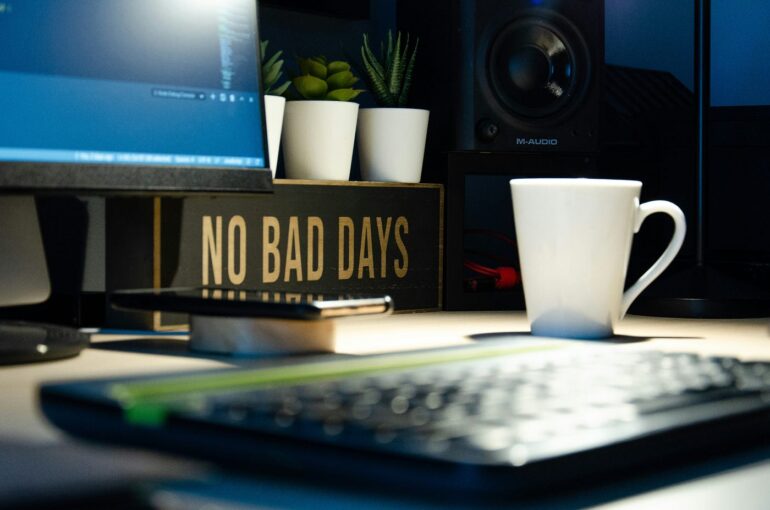In a world where screens dominate nearly daily life and doomscrolling has made its way into the dictionary, people sometimes need a break from online activities. If you’ve recently heard the phrase ‘Go Touch Grass,’ then you may know where this is headed. Digital minimalism offers a way to reclaim balance. The philosophy is simple: use technology with intention, focusing on the tools and apps that add genuine value while minimizing exposure to instant notifications and endless scrolling.
This trending lifestyle pivot isn’t about completely avoiding being online. It’s about making small changes to balance your life, such as limiting screen time and switching to a reputable internet provider (doing so allows you to access online information faster, freeing up time for more offline activities). Fall is a great time to reset your tech habits and make minimalism part of a more intentional life both on and off the web.
What Is Digital Minimalism?
Digital minimalism changes how we use technology, stripping away the nonessential from our online lives. The goal isn’t to abandon technology. Instead, you’re changing habits so online activities add value to your life, rather than distracting from it.
Benefits of better digital hygiene often include sharper focus, reduced stress, and a stronger sense of control over your daily routine, allowing you to take better advantage of online activities while building time for your work, hobbies, and loved ones.

Signs You Might Need a Digital Reset
How do you know if your digital habits are good or bad? Here are a few indications it’s time to embrace some changes:
- If you have difficulty completing tasks without constant interruptions from notification pings.
- If checking your phone, apps, or inbox leaves you feeling stressed and disorganized, it’s time to take action.
- If you’re constantly multitasking, with multiple tabs or screens open even when you need to focus.
- Hobbies and offline social activities are constantly interrupted by the need to check your devices.
Quick Steps to Embrace Digital Minimalism
- Start a device audit ─ check each device you own and remove unwanted apps. These can include unused apps and apps you use without being fully intentional.
- Change your app settings to limit screen time and reduce notifications.
- Organize your files, photos, and emails so you can find information quickly.
- Schedule regular device breaks throughout your day.

Balancing Connectivity & Minimalism
Digital minimalism doesn’t mean cutting yourself off from the tools you need; it’s about striking the right balance. Essential apps and platforms for work, learning, and staying in touch with loved ones should remain part of your routine, but with a shift toward intentional use rather than reactive scrolling or constant checking.
Part of that balance is making sure your connection works for you, not against you. You need the right internet speed to handle important online tasks without frustration, so choosing a reliable internet provider is essential. With the proper setup, you can stay connected when it matters most while keeping your online life focused and distraction-free.
Creating Healthy Tech Habits for Fall
Some of the most effective techniques to develop a more healthy relationship with tech involve making small, incremental changes in your life. Consider adding these strategies this fall:
- Schedule device-free blocks of time in the morning, evening, or on weekends when your screens stay off, giving you time to recharge and relax.
- Replace doomscrolling and mindless social media time with walks in crisp autumn air, cozy reading sessions, or fall traditions like baking or pumpkin carving.
- Designate tech-free zones at home so you can stay present and in the moment. Bedrooms, dining rooms, and family spaces are popular choices for tech-free zones.
- Unsubscribe from unwanted emails.
- Dock your device in a designated location out of your immediate reach to reduce instant gratification.

Long-Term Benefits
Practicing good digital hygiene helps reduce overload from endless content streams, news stories, disinformation, and notifications. Your focus and sleep patterns may improve, while stress levels drop. Some people report an increase in their ability to concentrate and make decisions without constant distractions from their devices. Others report feeling calmer, more present, and better able to enjoy person-to-person interactions.
On a safety note, using fewer apps reduces your device’s vulnerability to unauthorized attacks, so you have better protection and improved privacy. By cancelling unwanted (and sometimes forgotten) subscription services, you can even save some money!
All in all, embracing digital minimalism helps you take control of your device use and enjoy offline activities without constant social media FOMO. You need to be connected, but you don’t need to be online 24/7. Set some boundaries, starting with small, incremental changes, and you’ll find you get more out of your online and offline experiences.

